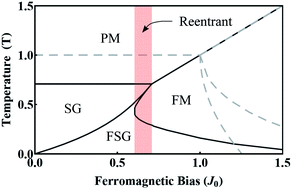Reentrance in an active glass mixture
Abstract
Active matter, whose motion is driven, and glasses, whose dynamics are arrested, seem to lie at opposite ends of the spectrum in nonequilibrium systems. In spite of this, both classes of systems exhibit a multitude of stable states that are dynamically isolated from one another. While this defining characteristic is held in common, its origin is different in each case: for active systems, the irreversible driving forces can produce dynamically frozen states, while glassy systems vitrify when they get kinetically trapped on a rugged free energy landscape. In a mixture of active and glassy particles, the interplay between these two tendencies leads to novel phenomenology. We demonstrate this with a spin glass model that we generalize to include an active component. In the absence of a ferromagnetic bias, we find that the spin glass transition temperature depresses with the active fraction, consistent with what has been observed for fully active glassy systems. When a bias does exist, however, a new type of transition becomes possible: the system can be cooled out of the glassy phase. This unusual phenomenon, known as reentrance, has been observed before in a limited number of colloidal and micellar systems, but it has not yet been observed in active glass mixtures. Using low order perturbation theory, we study the origin of this reentrance and, based on the physical picture that results, suggest how our predictions might be measured experimentally.


 Please wait while we load your content...
Please wait while we load your content...